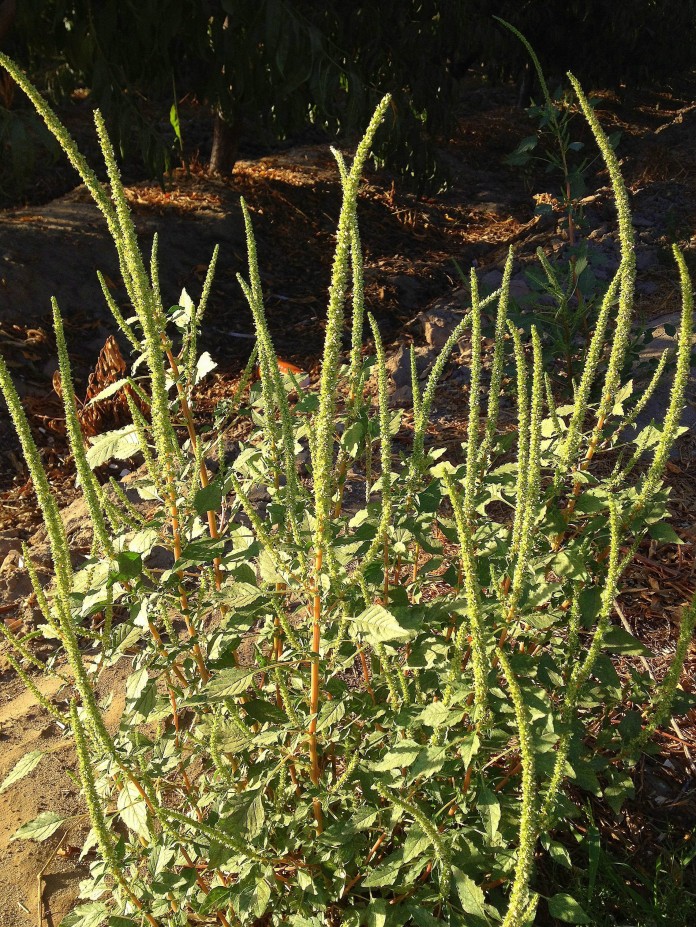COLUMBUS — Ohio growers, agribusinesses and Ohio State University weed scientists will need to work over the next decade to prevent a weed known to many cotton and soybean farmers in the south as “pigweed on steroids” from further expansion in Ohio, an Ohio State University Extension expert says.
Ohio
Palmer amaranth, which is a glyphosate-resistant weed that has wreaked havoc for southern U.S. growers, has been spotted in a large field near Portsmouth in extreme southern Ohio and potentially in a site just south of Columbus, said Mark Loux, an OSU Extension weed specialist.

The concern is that this weed, which has substantially reduced yields and profitability for cotton and soybean growers in southern states, could become a significant weed problem in Ohio if it continues to spread in the state. If it takes hold, Palmer amaranth could become even harder to control than the glyphosate-resistant weeds already in Ohio, Loux said.
The weed has caused entire cotton and soybean fields to be mowed down in some states.
Waterhemp
Waterhemp, another glyphosate-resistant weed, also has resulted in costly herbicide programs and control problems in parts of the Midwest.
“Waterhemp, which is present primarily in a few western counties in Ohio, has proven itself capable of developing resistance to almost any herbicide site of action used against it,” Loux said. “Both of these weeds have more potential to impact the profitability of our corn and soybean production than our other resistance problems.
“I don’t think we can be too alarmist about these weeds; they could make our current problems seem relatively minor. I’m hopeful that we are still in a prevention mode.”
Steps
Loux said steps to try to prevent further spread of Palmer amaranth and waterhemp include:
– Identifying new infestations as soon as they occur, preferably when the plant is small enough that herbicides are still effective. Growers with fields that have been spread with manure from animal operations using cottonseed products as a feed need to be particularly aware, as this manure may contain Palmer amaranth seed.
– Using the right herbicide at the right time. Both waterhemp and Palmer amaranth have extended period of emergence and require a combination of pre-emergence and postemergence herbicides.
– Preventing further seed production by any means possible is also essential to minimize the rate of population increase.
“That can include tillage, mowing and pulling the plant out by hand,” Loux said.
Palmer amaranth, which can grow 3 inches a day, can release nearly a half-million seeds per plant. And because the weed is glyphosate-resistant, many growers in southern states, in addition to spraying, have had to hire workers to go into their fields to chop down the weeds with hoes and pull them by hand.
“We’re trying to get people’s awareness up about these weeds,” Loux said. “If we’ve seen Palmer amaranth in one or two sites, then it’s most likely that we have it in more areas. But the more we can make people aware of it, the more we can do to slow it down in Ohio and control it because we’ve got to shut it down before it goes to seed.”
The potential financial impact for growers is a resistance problem with yield loss because the weed competition couldn’t be controlled, Loux said. Growers could find themselves in a position of having to pay $15 to $30 an acre to control it, and in some cases even higher costs have been incurred, from $20 to $40 per acre.
Control
“If you come across what you think may be Palmer amaranth or waterhemp but you’re in doubt, get it identified and we can make recommendations as to how to manage it,” he said. “That could include tearing up the fields and replanting if it’s found early enough in the season.
“While paying a crew to remove plants in mid-season is a viable solution though it carries a relatively high cost, the result of not doing so could be a substantial loss of income in future years.”










